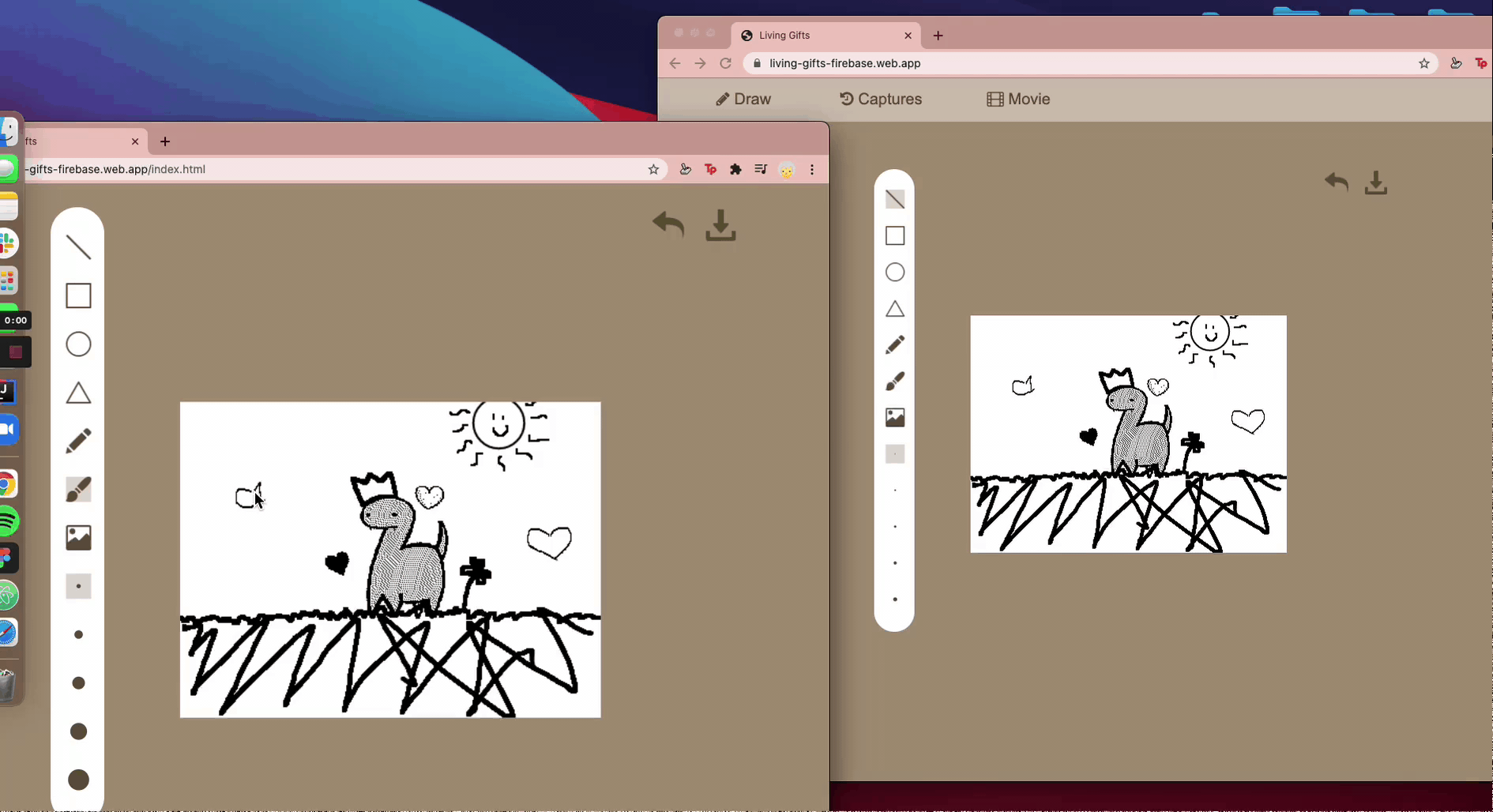Living Gifts
—Berkeley Hybrid Ecologies Lab Research
Team: Katherine Song, Michelle Gantos, Richard Liu
Involvment: Research, Ideation, Interface Prototype (Figma), Web Development (HTML + CSS), User Testing
Objective: Design and develop a pair of objects with digital surfaces for two individuals to co-design over time.
Duration: May 2020 - Present
Latest physical prototype
The Problem
Maintaining connections with distant loved ones is perhaps a more prevalent issue than ever before. Nowadays, many people use “social technologies” like instant messaging and video chats to keep in touch with family members living across the world or to maintain a long-distance relationship.
While these technologies provide fast and convenient ways to stay connected, they often require immediate action or responses from the receiver, which is not always feasible especially in relationships with predominantly asynchronous communication (due to time difference). Additionally, current “social technologies” remain largely in the digital realm, resulting in a limited array of interactions and a reduced amount of personalization in communicating with loved ones.
Problem Statment
How might we create a personalized way and non-disruptive way of staying connected with distant loved ones that do not rely on a send-acknowledge communication model?
Competitor Analysis
We identified three existing products that address similar issues in search of their strengths and weaknesses by looking at product reviews online.
Opportunities derived from UX pain points of existing products
• Savable messages for memento keeping.
• More creative freedom for users to personalize the type and content of the message,
• Device compatibility (with phone or tablet) and ease of message-sending.
Solution
“Living Gifts” are tangible, exchangeable objects whose surfaces become collaborative canvases for a pair of close individuals to co-design and update over time. Between a pair of friends, a single Living Gift may be given from one person to another, or the pair may decide to have matching, synced Living Gifts. Using and displaying a Living Gift in one’s home requires and builds trust between individuals to appropriately and tastefully help decorate each other’s objects, creating an opportunity for intimacy among distant loved ones.
Storyboard
Michelle Gantos
Project Components
The whole system consists of two parts: a collaborative drawing software application and a physical form (3D printed or laser cut) with integrated e-ink displays.
Interface Development
After the preliminary research and project ideation phase, I took on the role of designing the drawing application and implementing the design.
Initial Prototype
Since most e-ink displays do not support multiple colors, we chose to limit our drawing interface to black and white. However, we may rethink the choice of display technology depending on the feedback we receive from the planned user study.
The drawing interface supports freehand drawing, the ability to fill closed paths, and basic pre-formed patterns (e.g. flowers, hearts, and clouds).
We also support history tracking through our interface. While there is value in ephemeral exchanges, we felt that the ability to reflect upon and download the history of a “Living Gift” would encourage users to spend more effort into adding to their designs and also serve as a unique memento and visualization of a friendship over time. We envision that users could browse through daily captures and also view an animated version of their drawing evolving across time.
Implementation
Initial Interface
While implementing the interface, we decided that hosting the drawing interface on the web instead of on an iPad would be much more feasible from a practical perspective, especially to enable the collaborative drawing feature. Below is the initial functioning interface we developed.
While it has all the drawing tools needed, the overall interface leaves a lot to be desired in terms of visual design and usability.
New Interface
Given that my Figma prototype was designed for iPad, I had to make adjustments when styling the page with HTML and CSS for a browser-based interface. I added a navigation bar at the top and elongated the toolbar to easy pen stroke selection.
Ideally, we would like to give the user maximum creative freedom by giving them as much canvas space as possible to work with. However, the canvas size is currently restrained by the size and resolution of the ESP32 E-paper display.
Captures
Movie
Collaborative Drawing Demo
The pair of user could navigate to the web-based app to collaboratively create designs.
Choice of Form Factor & User Surveys:
We collected feedback using surveys on what form factors would be most desirable. Popular choices included planters and pencil cases, with respondents indicating a preference for objects with a large display area and with both functional and aesthetic value.
For our user study, we are planning to have participants choose what objects they want to use for the study from a small selection of models and custom-fabricate those models for each pair.
Physical prototype
Informed by the result of the user surveys, we created a stationary box as the initial physical form using laser cutting.
Current Project Stage
User Study Plan
We are currently in the process of setting up user testing for our prototype. Our plan is to run a 6-week user study with 12 pairs of participants recruited through Berkeley’s Jacobs Institute for Design Innovation’s mailing list. During the 6-week period, participants will be asked to submit weekly diaries in a form of a survey that inquires about their interaction and experiences with the “Living Gift”.
The result from the user study will be used to inform the next iteration of our design and prototype.














